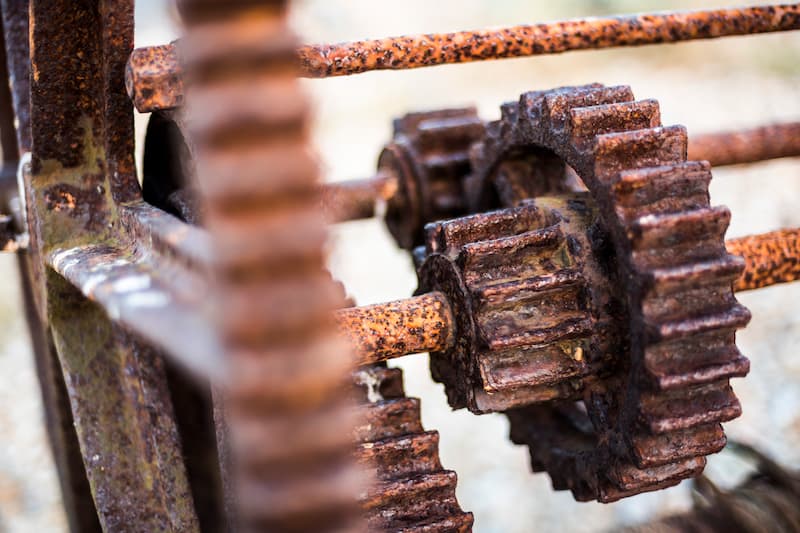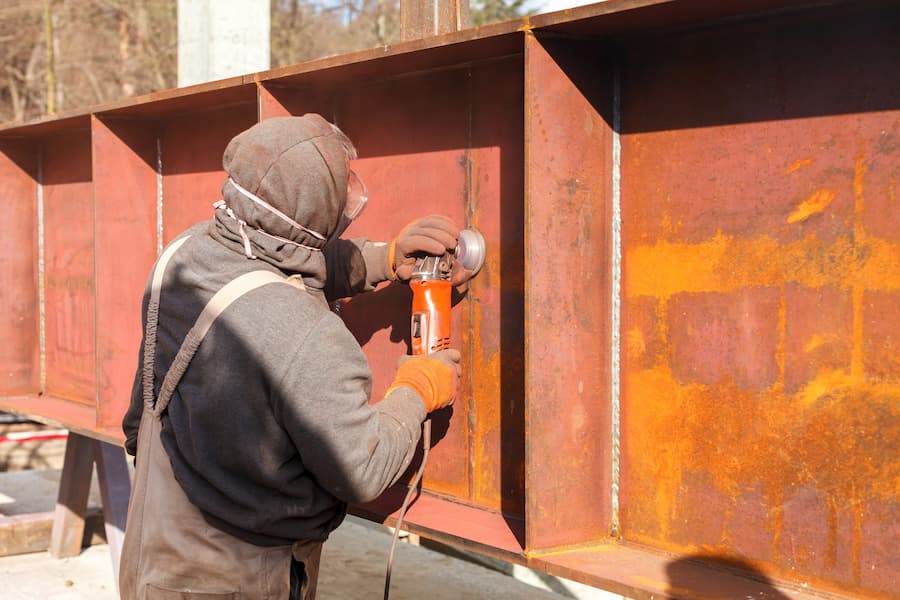No products in the cart.
Understanding Rust and Corrosion: ScienceDirect Topics on Rust Inhibitors
October 1, 2024
By Xion Lab
Free Shipping
easy returns
secure paymentS
FAQ | MY ACCOUNT | SUPPORT
October 1, 2024
By Xion Lab
Rust and corrosion can severely damage metal surfaces, leading to costly repairs. Rust inhibitors and corrosion inhibitors are chemical compounds designed to provide rust protection by slowing down corrosion inhibition processes. Whether through organic corrosion inhibitors or chemical interactions with ion and electrolyte exchange, these inhibitors create a protective barrier on steel surfaces. For a deeper dive, sciencedirect topics explore how solvent and lubrication methods can reduce the corrosion and extend the life of metal structures.
Rust forms when iron or steel reacts with oxygen and moisture, triggering a chemical process known as oxidation. This creates iron oxide, or rust, which weakens metal and makes it prone to breakage. However, while oxidation is a natural process, various environmental factors can accelerate it.

For example, high humidity, saltwater exposure, and industrial pollutants can lead to faster rust formation. Coastal areas, where the salt content in the air is high, often see metal structures deteriorate more rapidly. In industrial settings, pollutants in the air can increase the rate of rust formation due to the corrosive nature of chemicals and gases.
Taking into account the influence of environmental factors is critical to formulating an effective rust prevention strategy. Using rust inhibitors becomes even more crucial in such environments, as they can create a barrier that protects metal surfaces from external agents that speed up corrosion.
A rust inhibitor is a chemical substance designed to prevent rust from forming on metal surfaces. By creating a protective film, these inhibitors block corrosive elements—such as moisture, oxygen, and salt—from reaching the metal. They are particularly important in areas with harsh environmental conditions, including marine environments and industrial settings.
Rust inhibitors come in several forms, including water-based, oil-based, and solvent-based solutions, each of which offers varying levels of protection. While water-based inhibitors are effective in milder environments, oil-based inhibitors provide more robust protection in highly corrosive conditions. The goal is to form a barrier that prevents rust from taking hold and spreading across the metal surface.
Corrosion inhibitors are essential in preventing the corrosion of metals, and they can be classified based on their chemical composition and mechanism of action. There are three primary types of corrosion inhibitors: organic, inorganic, and mixed inhibitors.
Organic inhibitors, such as amines, are inhibitors designed to protect metals in environments with high moisture content. They work by adsorbing onto the surface of the metal, forming a thin protective layer that prevents the interaction between oxygen and water with the metal. These inhibitors are often used in applications where minimal environmental impact is desired, as they are less toxic than inorganic options. Organic inhibitors may temporarily block corrosion but offer effective short-term protection in water systems and are commonly used in industries like cooling water treatment or surfactant applications.
Inorganic inhibitors, such as polyphosphates or pigments, work by forming a passive layer on the metal’s surface. These inhibitors block the interaction between corrosive agents and metal surfaces, making them highly effective in industrial applications. Inorganic inhibitors are favored for providing long-lasting protection in environments where large metal surfaces require corrosion control, such as in water systems or areas exposed to electrochemical reactions. They are often used to protect metals like copper in cooling water and other similar settings.
A third category is mixed inhibitors, which combine both anodic and cathodic inhibition processes to slow the overall corrosion rate. These inhibitors are effective because they target both sides of the corrosion reaction, providing comprehensive protection. Mixed inhibitors are often found in water treatment systems and cooling towers, where metals are continuously exposed to corrosive agents. This type of inhibitor is ideal for settings where corrosion might be temporarily down, or protection might be temporarily affected, requiring ongoing treatment.
In the context of corrosion inhibitors, some resources might be outdated or difficult to access—such as research that leads to a new web address or an error like 404 not found. Nonetheless, reviewing current chapters and articles on anti-corrosion techniques is critical for understanding the latest advances. For example, the derivative compounds used in modern hydrophilic inhibitors are becoming increasingly important in preventing corrosion in water systems. By regularly conducting a review on corrosion control strategies and updating practices, industries can ensure that they are using the most effective inhibitors for their specific needs.
Inhibitors also play a critical role in cathodic and anodic processes that occur due to the presence of electrochemical factors in industrial environments. For instance, in cooling water systems, a carefully chosen inhibitor can significantly reduce metal corrosion and prolong the lifespan of key components.
The first step in applying a rust inhibitor is to properly clean the metal surface. Removing rust, dirt, and contaminants ensures that the inhibitor can effectively bond to the surface. Surface preparation may involve the use of a rust remover to eliminate existing rust or other forms of degradation that would interfere with the protective layer formed by the inhibitor.

Once the rust has been removed, use a degreaser to rid the surface of oils, grease, or other substances that might prevent the rust inhibitor from adhering properly. In industrial settings, this might require more advanced techniques, such as sandblasting or chemical treatments. Proper preparation is critical to achieving long-term protection.
After preparing the surface, the next step is applying the rust inhibitor. Rust inhibitors come in various forms—liquids, sprays, and coatings—so you should choose the type best suited for your application.
For general protection in less corrosive environments, a water-based inhibitor is sufficient. In highly corrosive environments, such as near the ocean or in industrial plants, an oil-based or solvent-based inhibitor may be necessary for long-term protection.
The application process should ensure that the inhibitor is spread evenly across the entire surface, forming a consistent protective film. In larger applications, such as steel structures or pipelines, using a sprayer may be more efficient, while smaller, detailed jobs may require a brush for precision.
To achieve full protection, it’s important to apply multiple coats of the inhibitor. For metal exposed to extreme weather or constant moisture, multiple coats may provide the additional protection needed to prevent corrosion. Some inhibitors also require regular reapplication, especially in environments with high humidity or exposure to saltwater.
It’s also important to conduct regular inspections of the treated metal. If the protective film shows signs of wear or damage, reapplying the rust inhibitor will ensure continuous protection. In settings where corrosion is a significant concern, scheduling routine maintenance checks can catch early signs of rust and prevent more extensive damage down the line.
Rust inhibitors provide long-term protection by forming a protective barrier that prevents moisture, oxygen, and other corrosive elements from interacting with metal surfaces. This barrier ensures that even under challenging environmental conditions, rust will not form, preserving the integrity of the metal.
Over time, rust inhibitors save you money by reducing the frequency of maintenance and the likelihood of expensive repairs or replacements. For example, in the marine industry, where ships and offshore platforms are constantly exposed to saltwater, using rust inhibitors is essential to maintaining the structural integrity of metal components. Without regular use of inhibitors, these structures would suffer from rapid degradation due to corrosion.
One of the main benefits of rust inhibitors is their cost-effectiveness. The upfront cost of applying a rust inhibitor is minimal compared to the potential expenses of dealing with rust damage. By reducing the need for constant maintenance, rust inhibitors lower the overall cost of ownership for metal assets.
In industries such as construction and transportation, where metal is a significant component of infrastructure, using rust inhibitors is crucial for ensuring the longevity of machinery, vehicles, and structures. Regular application of rust inhibitors not only protects your investment but also ensures that operations run smoothly without unexpected equipment failures caused by corrosion.
Rust inhibitors are incredibly versatile and can be used on a wide variety of metal surfaces, including steel, iron, copper, and aluminum. They are applicable in numerous industries, such as automotive, construction, marine, and manufacturing. Whether you’re looking to protect small parts in machinery or large metal structures like bridges and pipelines, there’s a rust inhibitor for every need.
Many corrosion inhibitors also contain lubricants that protect moving parts from both wear and corrosion, adding another layer of protection. By using these dual-purpose inhibitors, you can maintain the performance of metal components while safeguarding them from rust.
As mentioned earlier, organic inhibitors are typically used in environments with regular exposure to moisture and oxygen. They adsorb onto the metal surface, creating a hydrophobic layer that repels water and prevents corrosion. Inorganic inhibitors, on the other hand, chemically react with the metal surface to form a passive film that blocks the corrosive agents. Both types are highly effective, though the best option depends on your specific environment and corrosion risks.
In industrial settings, phosphate-based inhibitors are widely used due to their ability to protect metal surfaces from both rust and chemical corrosion. These inhibitors are often found in water treatment systems, pipelines, and large metal structures where corrosion protection is critical.
When choosing a rust inhibitor, consider the specific metal you are protecting, the environment it will be exposed to, and the frequency of reapplication. For example, if you’re working with metal that will be exposed to saltwater, such as on a boat or near the coast, an oil-based inhibitor will provide the best protection. However, for indoor applications with minimal exposure to moisture, a water-based inhibitor may be sufficient.

By understanding the different types of inhibitors and their applications, you can select the best rust prevention method for your specific situation. This ensures not only the protection of your metal surfaces but also a more efficient and cost-effective approach to corrosion control.
The best rust inhibitor depends on the type of metal and the environment it’s exposed to. Oil-based inhibitors are ideal for highly corrosive environments, while water-based inhibitors work well for general-purpose protection.
A rust inhibitor forms a protective layer on the metal surface that blocks moisture, salt, and oxygen from reaching the metal. This slows down the oxidation process and prevents rust from forming.
The frequency of application depends on the type of inhibitor used and the environment. In harsh environments, such as coastal or industrial areas, more frequent reapplication may be required to maintain protection.
Yes, rust inhibitors can be used on most metal surfaces, including steel and iron. However, the effectiveness of the inhibitor may vary depending on the specific metal and the environment in which it is used.
Anodic inhibitors form a passive layer on the metal surface, while cathodic inhibitors slow down the corrosion rate by inhibiting the reduction reactions that contribute to rust formation. Both types of inhibitors are effective at preventing rust and corrosion.
Rust inhibitors are essential for preventing corrosion and extending the life of metal surfaces in various environments. Whether you’re dealing with small metal components or large structures, applying the right rust inhibitor will provide long-term protection against rust and save you from costly repairs in the future. By understanding how rust inhibitors work and knowing how to apply them correctly, you can safeguard your investments and ensure the longevity of your metal assets.